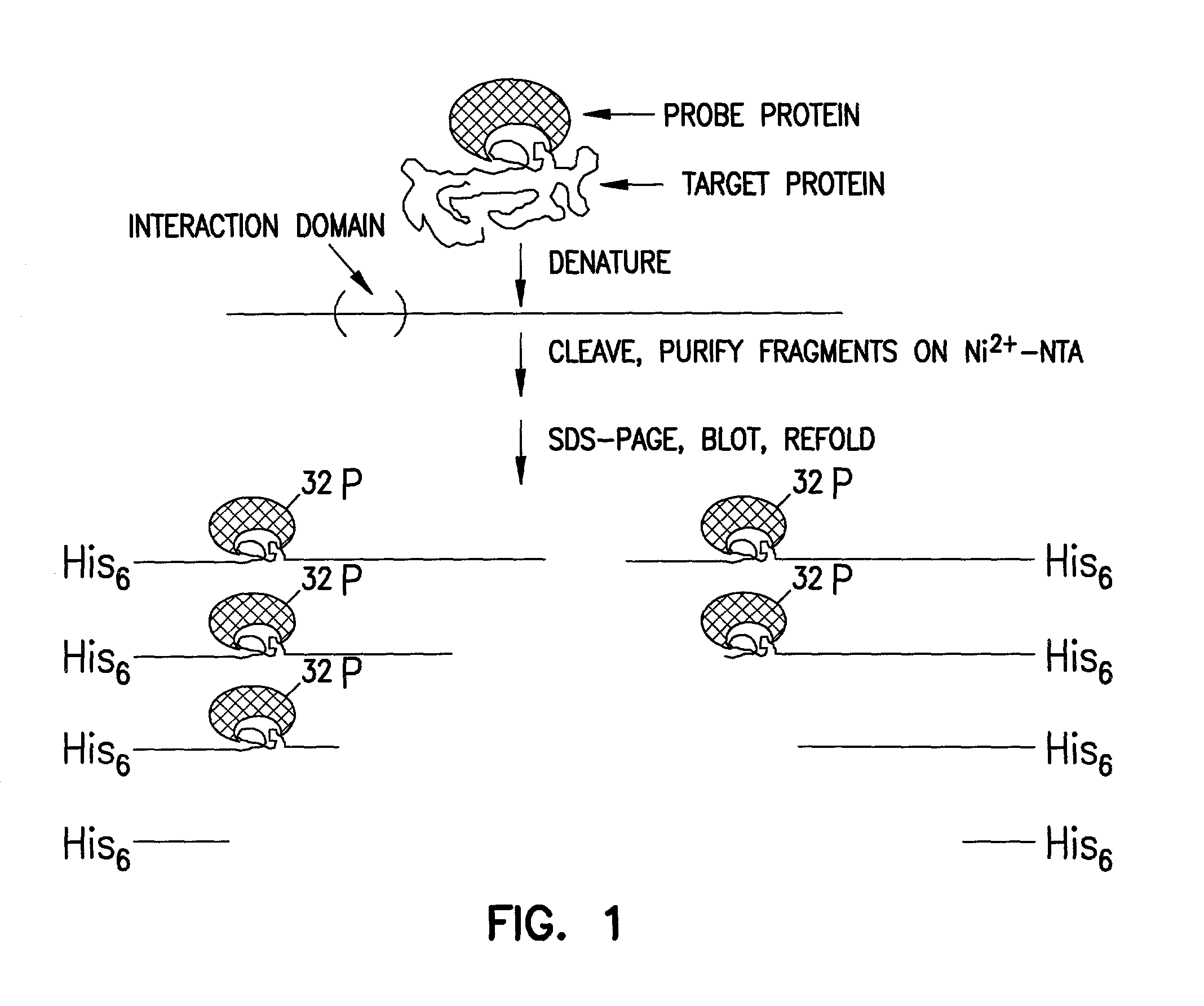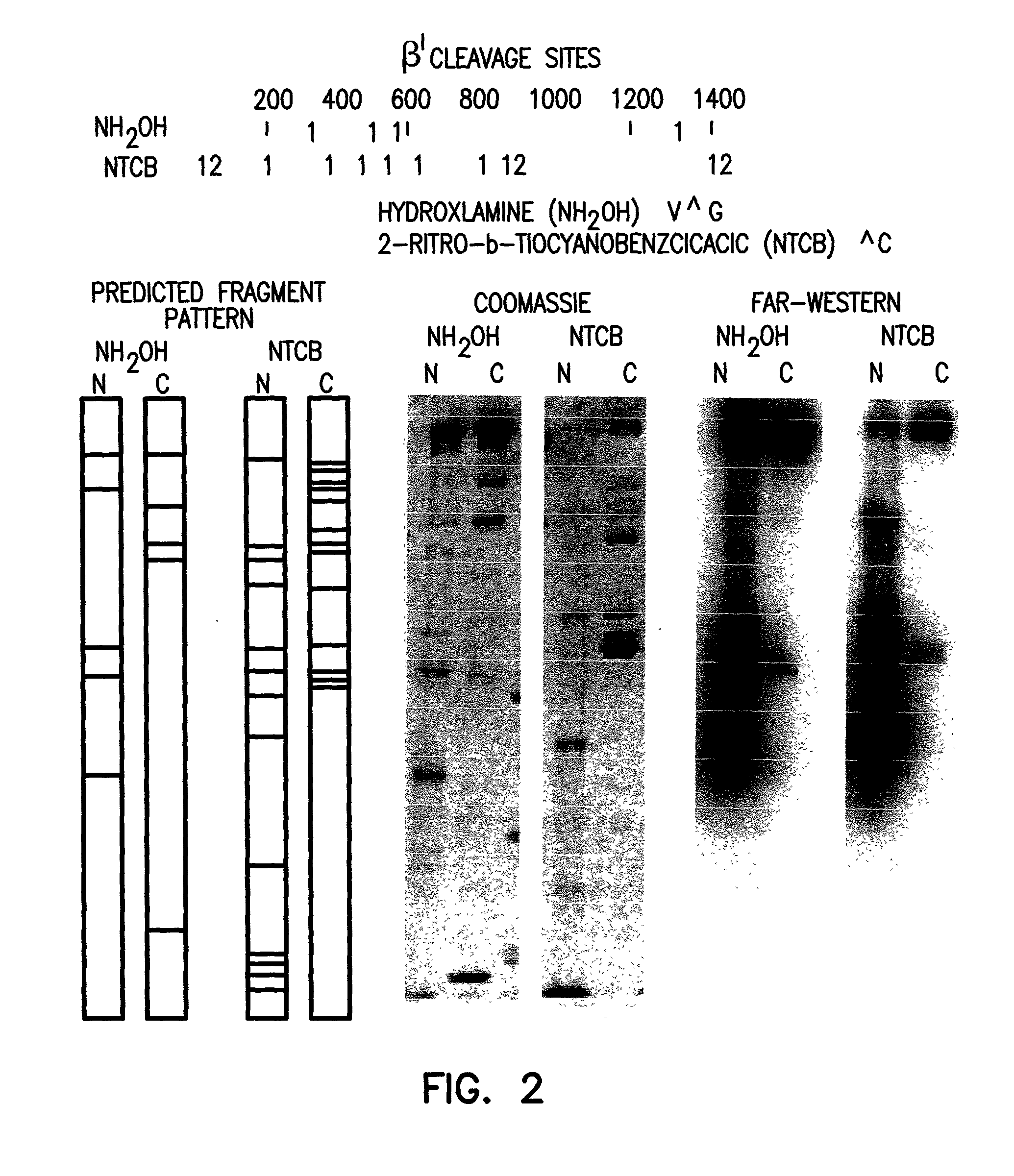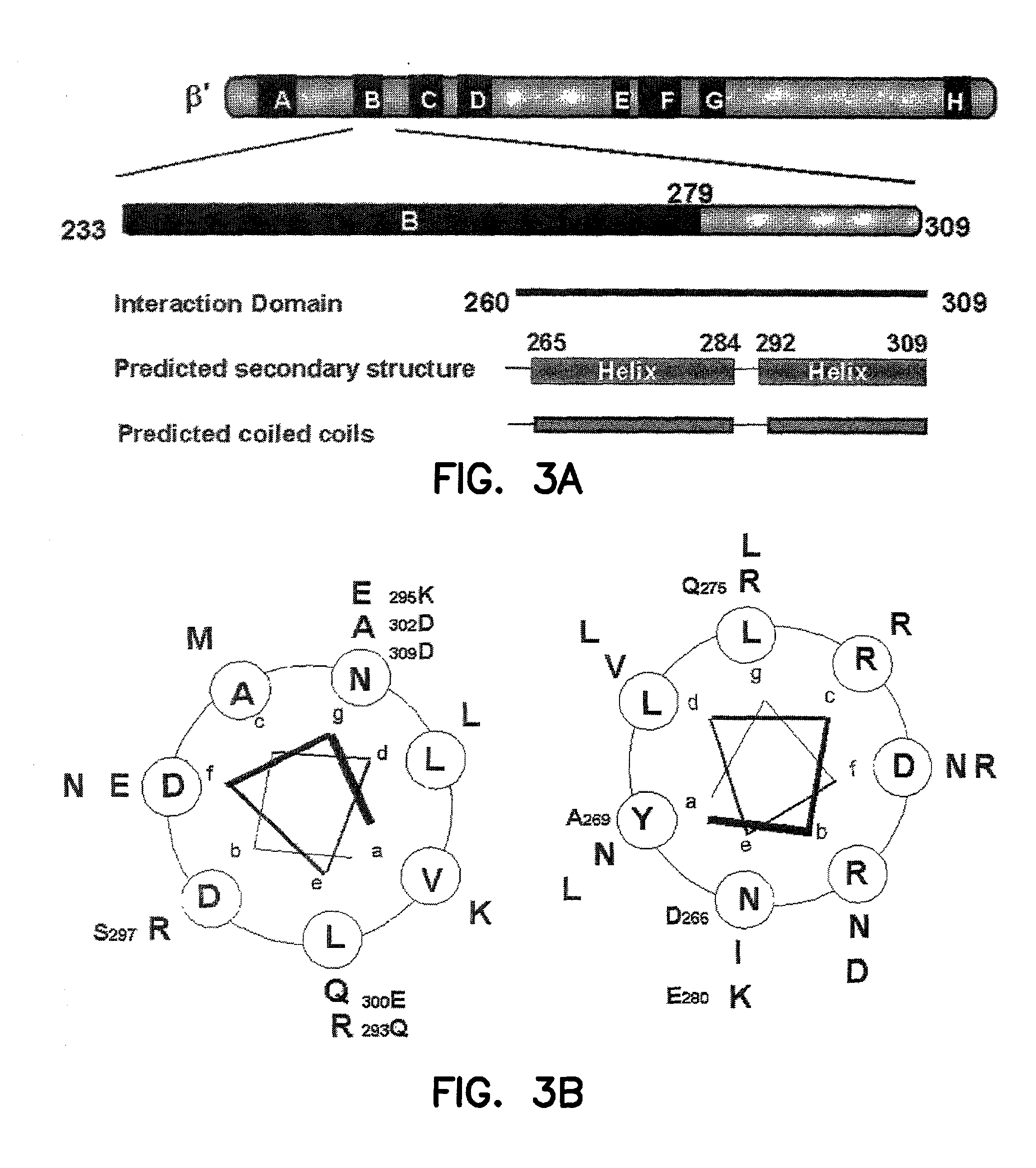Sigma binding region of RNA polymerase and uses thereof
a polymerase and rna technology, applied in the field of rna polymerase sigma binding region, can solve the problems of non-specific deletion and unclear whether
- Summary
- Abstract
- Description
- Claims
- Application Information
AI Technical Summary
Benefits of technology
Problems solved by technology
Method used
Image
Examples
example 1
Far-Western Blot Mapping
[0040] Transferring materials out of SDS gels (blotting) onto a nitrocellulose membrane has become a widely used technique. It not only takes advantage of the high resolving power of polyacrylamide gel electrophoresis but also allows ready access to the blotted target material by a variety of interaction probes. A Western blot is generally probed or detected with an antibody, while a south-Western blot is probed with a labeled DNA. In a far-Western blot, instead of probing with an antibody, one probes with another protein, taking advantage of specific protein-protein interactions. This approach requires that at least some region (the interaction domain) of a fraction of the blotted target protein be able to refold on the membrane and form a 3-dimensional structure containing the interaction site. This approach is particularly useful in determining which subunit of a multisubunit complex is involved in an interaction with the probe protein.
[0041] The use of an...
example 2
Far-Western Blot Analysis of .beta.', .beta. and .sigma.
[0149] Materials and Methods
[0150] Plasmids
[0151] Plasmid characteristics are described in Table 2.
2TABLE 2 Plasmid Subunit Residues Modifications Ref. pTA499 .beta.' 1-1407 N-terminal His.sub.6 Arthur and Burgess, 1998 pTA500 .beta.' 1-1407 C-terminal His.sub.6 Arthur and Burgess, 1998 pTA501 .beta. 1-1342 N-terminal His.sub.6 Arthur and Burgess, 1998 pTA502 .beta. 1-1342 C-terminal His.sub.6 Arthur and Burgess, 1998 pTA515 .beta.' 1-260 None Arthur and Burgess, 1998 pTA516 .beta.' 1-280 None Arthur and Burgess, 1998 pTA517 .beta.' 1-300 None Arthur and Burgess, 1998 pTA518 .beta.' 1-309 None Arthur and Burgess, 1998 pTA519 .beta.' 150-309 None Arthur and Burgess, 1998 pTA522 .beta.' 1-260 N-terminal His.sub.6-HMK Arthur and Burgess, 1998 pTA523 .beta.' 1-280 N-terminal His.sub.6-HMK Arthur and Burgess, 1998 pTA524 .beta.' 1-300 N-terminal His.sub.6-HMK Arthur and Burgess, 1998 pTA525 .beta.' 1-309 N-terminal His.sub.6-HMK Art...
example 3
Mutational Analysis of .beta.'.sub.260-309
[0201] Materials and Methods
[0202] Construction of Plasmids
[0203] Plasmid characteristics are described in FIG. 7 and Tables 3-4. Plasmids pTA577 and 600-620 were made from the base plasmid pRL663 (Wang et al., 1995). Single HindIII and BamHI restriction sites were inserted into the rpoC gene of pRL663 via silent mutagenesis to create pTA577. pTA561 was created in the same manner as pTA577 except pRL308 (Weilbaecher et al., 1994) was the starting plasmid. The Hindfl and BamHI restriction sites were used to insert PCR generated DNA fragments containing the various mutations to generate pTA600-609. For pTA620, containing a truncated rpoC fragment coding for .beta.' residues 1-319, pRL663 was cut with XbaI HindlU for insertion of the PCR generated rpoC truncation. The .sigma..sup.70 binding site was mapped to 260-309 of .beta.', however, some of the constructs were engineered to extend to residue 319. This was done to incorporate the BamHI site...
PUM
| Property | Measurement | Unit |
|---|---|---|
| Temperature | aaaaa | aaaaa |
| Temperature | aaaaa | aaaaa |
| Volume | aaaaa | aaaaa |
Abstract
Description
Claims
Application Information
 Login to View More
Login to View More - R&D
- Intellectual Property
- Life Sciences
- Materials
- Tech Scout
- Unparalleled Data Quality
- Higher Quality Content
- 60% Fewer Hallucinations
Browse by: Latest US Patents, China's latest patents, Technical Efficacy Thesaurus, Application Domain, Technology Topic, Popular Technical Reports.
© 2025 PatSnap. All rights reserved.Legal|Privacy policy|Modern Slavery Act Transparency Statement|Sitemap|About US| Contact US: help@patsnap.com



